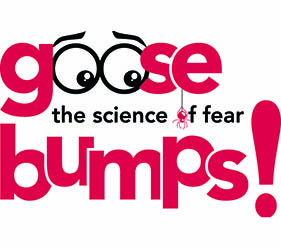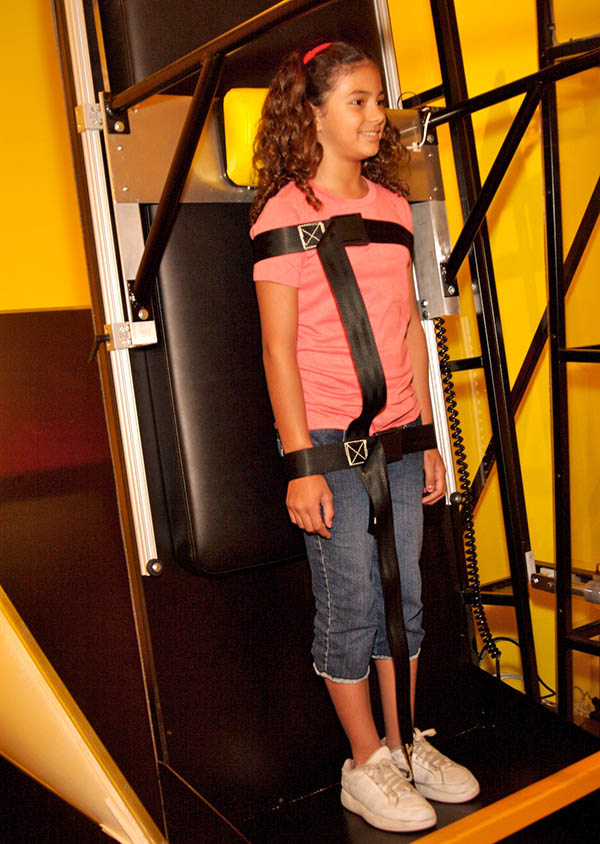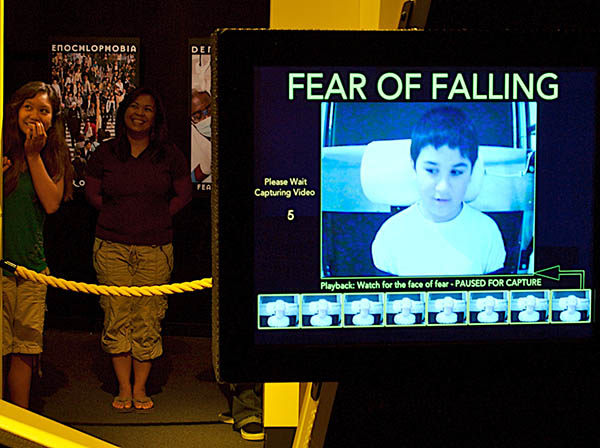Goose Bumps! The Science of Fear
Goose Bumps! The Science of Fear
By Susan Fine

Why do our hearts race, our knees shake, and our bodies sweat when we are scared? Goose Bumps! The Science of Fear, a new exhibit developed by the California Science Center, explores this universal emotion that can save our lives. Through fun, interactive challenges, guests can experience fear in a safe environment and discover the science behind their physical and emotional responses. The exhibit opens Thursday January 24 at the Western Heritage Museum and Lea County Cowboy Hall of Fame, with a free reception for the public, beginning at 5:30pm.
“This exhibit is very interactive to help visitors understand what happens to the
body when they get scared,” said Dr. Darrell Beauchamp, Executive Director of the
 Museum. “Visitors will experience common fears like falling, animals and loud noises
– all while having fun. We are very excited to bring this to Lea County.”
Museum. “Visitors will experience common fears like falling, animals and loud noises
– all while having fun. We are very excited to bring this to Lea County.”
The 5,000 square-foot exhibit includes immersive environments and full-body, interactive experiences that allow guests to test their own fears and rate their physiological responses. Leading scientists and their current research on the neurobiology, physiology and psychology of fear are also featured throughout the exhibit.
“We all experience fear, but many people do not understand why”, said Dr. David Bibas, California Science Center Curator of Technology Programs and exhibit organizer for Goose Bumps! “This is the first comprehensive exhibit on fear that engages visitors with fun experiences that trigger an authentic fear response, and then motivates them to learn how the brain and body work together in response to danger. “
Goose Bumps! begins with the Fear Challenge Course, where visitors can face four common fears in a safe environment. The first challenge, Fear of Animals, dares guests to reach into concealed terrariums that might be the home of creepy-crawly creatures. In the next room, Fear of Electric Shock, visitors may feel their heart pounding as they anticipate getting zapped by a jolt of electricity. In Fear of Loud Noises visitors test this innate fear that helps keep us out of harm’s way. Finally, the Fear of Falling challenge allows guests to experience a sudden loss of support and then watch a video recording of their reaction to the backwards drop.
Another exhibit highlight is the Fear Lab, a section which explores the brain’s structures and pathways that drive the fear response. Visitors will meet Mr. Goose Bumps, a larger-than-life figure that illustrates, through animation, how the brain and body work together in response to danger. Real brains and brain slices preserved through the process of plastination are on display showing similarities in a key fear structure in the brains of humans and animals.
Other thematic areas in the exhibit include:
Faces of Emotion – Visitors can explore the facial expressions of fear and other emotions that may be universal in humans. Cutting edge software is used to analyze and identify guests’ facial expressions.
 Fear in the Wild – A put-yourself-in-the-picture immersive video game allows guests to explore common
responses to danger, including freeze, flight and fight. Visitors will discover how
fear helps all animals, including humans, stay alive.
Fear in the Wild – A put-yourself-in-the-picture immersive video game allows guests to explore common
responses to danger, including freeze, flight and fight. Visitors will discover how
fear helps all animals, including humans, stay alive.
Fear and Society – Some fears spread beyond the individual and become stronger as more people become afraid. A short film and exhibit displays how our collective fears are represented and transmitted through media and pop culture.
Coping with Fear – While a certain amount of fear is normal, some anxieties can get out of control. Visitors can find out what fears are common at different stages in life, and learn about ways to help children move past their fears. They can also watch interviews with patients suffering from anxiety disorders to understand what happens when the fear system goes awry.
Design and Development
Goose Bumps! The Science of Fear is developed by the California Science Center and supported, in part, by the Informal Science Education program of the National Science Foundation under grant ESI-0515470. Opinions expressed are those of the authors and not necessarily those of the National Science Foundation.


